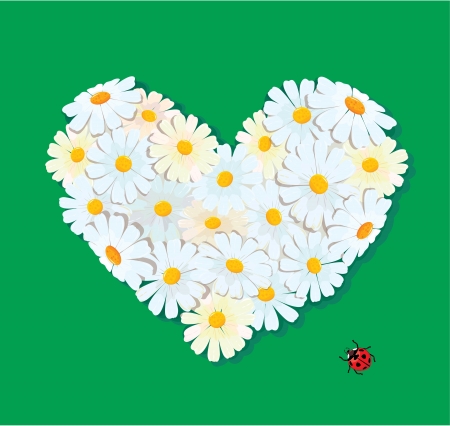Introduction to Chamomile in British Culture
Chamomile has long held a cherished role within British herbal traditions, standing as an enduring symbol of calm and comfort throughout the nation’s history. Often affectionately referred to as “the Queen of Calm,” chamomile’s gentle reputation is woven into the fabric of everyday British life. From the classic cup of chamomile tea enjoyed before bedtime to its inclusion in home remedies passed down through generations, this humble flower has earned its place as a household staple. Its presence can be traced back centuries, consistently valued for its mild, soothing properties and reliability as a natural remedy. In Britain, chamomile is more than just a plant—it embodies a sense of familiarity and reassurance, reflecting the country’s broader appreciation for herbal wisdom and traditional approaches to wellbeing.
2. Historical Uses and Folklore
Chamomile’s legacy in British culture is deeply entwined with centuries of herbal wisdom and storytelling. Its journey began in the medieval period, where this humble flower was a staple of monastic and cottage gardens alike. In those days, chamomile was not only valued for its soothing properties but also as a practical solution to everyday problems—from freshening up rush-strewn floors to calming digestive woes after hearty feasts. As British society evolved, so did chamomile’s role. By the time of the Victorians, it had found a place on parlour tables, both as a gentle tisane and as a symbol of genteel hospitality.
| Era | Main Uses | Cultural Significance |
|---|---|---|
| Medieval | Herb gardens, strewing herb, basic medicine | Protection from bad airs and spirits; household calm |
| Tudor & Stuart | Infusions for health, culinary flavouring | Folk remedy for fever and anxiety; charm against misfortune |
| Victorian | Tea, tinctures, decorative use in homes | Symbol of refinement and domestic care |
The folklore surrounding chamomile is equally rich. Old English superstition held that planting chamomile near doorways would ward off illness and invite good luck—a belief likely rooted in its reputation for purifying the air. Tales abound of country folk tucking chamomile under pillows to bring sweet dreams or weaving it into posies given to travellers as tokens of safe passage. In many rural communities, it was said that “the more you tread on chamomile, the more it will grow,” reflecting both its literal hardiness and a deeper metaphor for resilience in the face of adversity—a distinctly British value passed down through generations.

3. Botanical Characteristics and Growing Habits
Chamomile is a cherished staple in British gardens, renowned not only for its soothing properties but also for its delicate beauty. Two main species are commonly grown across the UK: Chamaemelum nobile, known as Roman chamomile, and Matricaria chamomilla, or German chamomile. Both species feature dainty white petals encircling a golden-yellow centre, but the Roman variety is perennial, making it especially suited to the classic, low-maintenance cottage garden aesthetic. Chamomile thrives in well-drained, light soils with plenty of sunlight, which explains its popularity throughout southern England and other regions with mild summers. Gardeners often plant chamomile along paths or as a fragrant lawn alternative, where its apple-like scent is released underfoot. Its resilience and gentle appeal have ensured its place as both a medicinal herb and an ornamental favourite—a true emblem of calm and comfort within the tapestry of British horticultural tradition.
4. Chamomile in Classic British Remedies
Chamomile has been a cornerstone of British home remedies for centuries, finding its way into countless kitchen cupboards and family apothecaries. Its delicate flowers have been traditionally dried and blended into teas, tinctures, and soothing balms—a testament to its status as the “Queen of Calm.” In the UK, chamomile tea is much more than a simple beverage; it’s an emblem of comfort, often enjoyed before bed or during times of stress. The gentle aroma and mild flavour are familiar to many Britons, and local recipes often pair chamomile with other native botanicals such as lavender, lemon balm, or mint.
Classic Preparations in British Households
| Remedy Type | Ingredients | Traditional Use |
|---|---|---|
| Infused Tea | Dried chamomile flowers, boiling water (sometimes with a hint of honey or lemon) | Promoting relaxation and restful sleep |
| Tincture | Fresh or dried chamomile flowers, alcohol (usually brandy or vodka) | Digestive aid and calming drops for anxiety |
| Herbal Bath Soak | Chamomile flowers, oats, lavender (placed in a muslin bag) | Soothe irritated skin and encourage tranquillity before bed |
| Poultice or Compress | Steeped chamomile flowers wrapped in cloth | Applied to minor wounds or inflamed skin for relief |
Local Recipes and Practices
Across the British Isles, each region has its unique take on using chamomile. In the Cotswolds, families might brew a strong cup of chamomile tea with a splash of locally produced honey after a long walk. Meanwhile, Scottish herbalists have historically included chamomile in blends with wild heather to make restorative bedtime teas. Urban apothecaries in London often feature small-batch chamomile tinctures designed for modern stress relief. These practices reflect not only a respect for tradition but also a willingness to adapt herbal wisdom to contemporary life.
The Enduring Legacy of Home Apothecaries
The art of blending chamomile into household remedies remains alive through generations. Whether steeped as part of an evening ritual or added to bespoke herbal blends, chamomile’s presence in classic British remedies underscores its versatility and enduring appeal within local health traditions.
5. Modern Relevance and Everyday Use
Chamomile’s enduring appeal in Britain is not simply a relic of herbal folklore; rather, it continues to weave itself into the fabric of modern British life. Walk down any high street or browse the aisles of a supermarket, and chamomile tea bags are a staple presence—testament to its popularity as the nation’s go-to remedy for relaxation. While the tradition of brewing loose-leaf chamomile persists among herbal enthusiasts, most households now favour the convenience of pre-packed blends, making it easier than ever to incorporate this calming herb into daily routines.
In contemporary Britain, chamomile is much more than just a beverage. Its reputation as the “Queen of Calm” has led to its inclusion in an array of products designed for stress relief and self-care. From soothing pillow sprays and bath oils to gentle skincare formulations, chamomile’s natural anti-inflammatory and sedative properties are frequently highlighted on packaging, appealing to consumers seeking moments of peace amid busy urban lifestyles.
The association between chamomile and restful sleep remains especially strong. Many Britons enjoy a warm cup of chamomile tea as part of their evening wind-down ritual, viewing it as an essential step towards a good night’s rest. Some families pass down bedtime traditions involving chamomile infusions, blending nostalgia with modern wellness practices. Health food shops often stock dried chamomile flowers for those who prefer their tea loose, offering a nod to heritage while embracing today’s emphasis on personal choice.
Beyond the home, British cafes and tearooms frequently include chamomile on their menus alongside classic black teas and trendy herbal infusions. Its gentle flavour makes it an accessible introduction to herbal teas for those less accustomed to bold or bitter tastes. Meanwhile, British wellness culture—bolstered by social media—has sparked renewed interest in mindful rituals, with influencers and experts alike recommending chamomile for everything from anxiety management to digestive support.
Ultimately, chamomile’s role in contemporary British life reflects both continuity and innovation: cherished for its time-tested benefits yet constantly finding new expressions in response to changing habits. Whether sipped quietly before bed or woven into luxurious self-care routines, chamomile retains its crown as the Queen of Calm—a gentle companion through the stresses and strains of modern living.
6. Conclusion: The Lasting Legacy of Chamomile
Chamomile’s enduring presence in British herbal traditions is a testament to its reputation as ‘The Queen of Calm’. Throughout centuries, this humble flower has woven itself into the very fabric of British life—not just as a gentle remedy for sleeplessness or a soothing cup at bedtime, but as a symbol of resilience and comfort in both personal and communal settings. Its gentle aroma and subtle taste have offered solace during times of hardship, while its practical applications—ranging from easing digestive discomfort to providing a natural skincare solution—continue to be celebrated today. As we reflect on chamomile’s symbolic and practical contributions, it becomes clear why it maintains such a revered status. In an ever-changing world, chamomile stands as a reminder of the power found in simplicity, nature, and tradition. Its legacy is not merely rooted in folklore or old wives’ tales; rather, it thrives in modern Britain’s kitchens and apothecaries, bridging the gap between ancient wisdom and contemporary wellbeing. For those seeking calm amidst the bustle, chamomile remains an enduring ally—a true queen among herbs.


